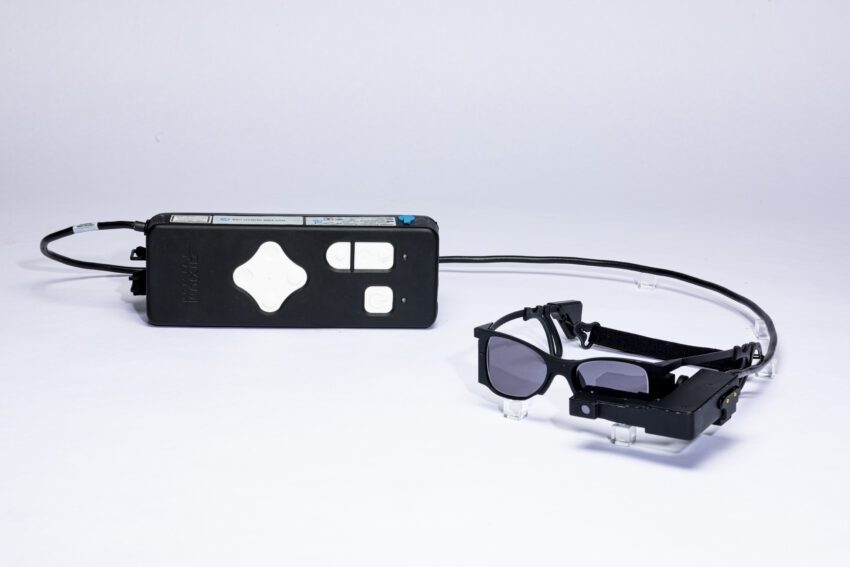
blind patients read again with smart glasses-linked Recent advancements in retinal implant technology have enabled several dozen patients with age-related macular degeneration to regain some central vision through a combination of smart glasses and an eye implant.
blind patients read again with smart glasses-linked
Overview of the Study
A groundbreaking study published on Monday in The New England Journal of Medicine highlights the potential of a novel eye implant paired with smart glasses to restore vision in patients suffering from age-related macular degeneration (AMD). This progressive form of blindness affects millions of individuals, particularly those aged 60 and older, leading to a significant decline in quality of life. The study involved patients who had a diagnosed case of AMD in both eyes and a measured visual acuity of at least 1.2 logMAR or worse in the study eye.
Understanding Age-Related Macular Degeneration
Age-related macular degeneration is a leading cause of vision loss in older adults. The condition primarily affects the macula, the part of the retina responsible for sharp, central vision. As cells in the macula die over time, patients experience a gradual loss of their ability to see fine details, making everyday tasks such as reading, driving, and recognizing faces increasingly difficult. Unfortunately, there is currently no cure for AMD, and existing treatments primarily focus on slowing its progression rather than reversing the damage.
The Innovative Technology
The study’s innovative approach involved a 2-by-2-millimeter retinal implant made of tiny photovoltaic solar panels. This device was surgically implanted under the retina in the patients’ eyes, allowing it to interact directly with the optic nerve. Patients wore specially designed smart glasses equipped with cameras that captured images of their surroundings. These glasses transmitted zoomed-in images to the retinal implant using near-infrared light, which is invisible to the human eye.
Mechanism of Action
Once the images were transmitted to the retinal implant, the device pulsed small electrical signals into the optic nerve, mimicking the natural signals that healthy retinal cells would typically send. This innovative mechanism allowed patients to perceive a blurry representation of their environment, albeit in black and white. While the restored vision is not perfect, the ability to discern shapes and outlines represents a significant breakthrough for individuals who have been living with severe visual impairment.
Clinical Trial Results
The clinical trial began with 38 patients who received the retinal implant. Out of these, 32 participants remained in the study for the full year. At the one-year mark, researchers reported that 26 of the 32 participants—an impressive 80 percent—demonstrated improved vision compared to their baseline measurements. Participants were able to engage in activities such as filling out crossword puzzles and reading standard print books, tasks that had previously been impossible due to their vision loss.
Patient Experience and Limitations
While the results are promising, it is important to note that the restored vision is not without limitations. Patients reported experiencing a blurry view of the world, which can make it challenging to navigate complex environments. Additionally, the technology currently only allows for black-and-white vision, which may not fully replicate the rich visual experiences that most individuals take for granted. Nevertheless, the ability to regain any degree of central vision is a significant milestone for those affected by AMD.
Reactions from the Medical Community
The study has garnered significant attention from the medical community and beyond. Researchers uninvolved in the study have praised the work as “amazing,” highlighting its potential to change the lives of individuals suffering from vision loss. The success of the trial raises important questions about the future of vision restoration technologies and the potential for further advancements in this field.
Broader Implications
The implications of this study extend beyond the immediate benefits for AMD patients. The technology developed by Science Corporation, the company behind the retinal implant, represents a significant step forward in the field of vision restoration. By combining cutting-edge engineering with medical science, researchers are paving the way for new treatments that could benefit a broader range of patients with various forms of vision impairment.
The Role of Science Corporation
Science Corporation, the company responsible for the development of this retinal implant technology, has a notable history in the field of brain-computer interfaces. Founded by Max Hodak, who co-founded Neuralink with Elon Musk in 2016, the company has focused on creating innovative solutions for neurological disorders. In 2024, Science Corporation acquired the retinal implant technology from the French medical device company Pixium Vision, which had struggled financially after a decade of development efforts. This acquisition allowed the clinical trial to continue and provided a new lease on life for the promising technology.
Challenges in the Medical Device Industry
The story of the retinal implant technology is not unique. It mirrors the challenges faced by other companies in the medical device industry, such as Second Sight Medical, which also encountered financial difficulties. The ability of startups to rescue abandoned technologies is crucial for advancing medical science and bringing innovative solutions to patients in need. The collaboration between different companies and research institutions can lead to breakthroughs that may not have been possible in isolation.
Future Directions
Looking ahead, the success of this clinical trial opens the door for further research and development in the field of vision restoration. Researchers are optimistic that advancements in technology could lead to improved visual acuity and color perception for patients in the future. Ongoing studies will likely focus on refining the retinal implant technology, enhancing the capabilities of the smart glasses, and exploring the potential for combining this approach with other therapeutic modalities.
Potential for Broader Applications
Moreover, the underlying technology could have applications beyond AMD. Other forms of vision impairment, such as retinitis pigmentosa and diabetic retinopathy, may also benefit from similar approaches. As researchers continue to explore the possibilities, the hope is that more individuals suffering from various types of vision loss will have the opportunity to regain some degree of sight.
Conclusion
The recent study demonstrating the effectiveness of a retinal implant paired with smart glasses marks a significant milestone in the quest to restore vision for individuals affected by age-related macular degeneration. While challenges remain, the results offer hope and inspiration for patients and researchers alike. As technology continues to evolve, the potential for restoring vision and improving the quality of life for those with visual impairments is becoming increasingly tangible.
Source: Original report
Was this helpful?
Last Modified: October 21, 2025 at 2:36 am
2 views















